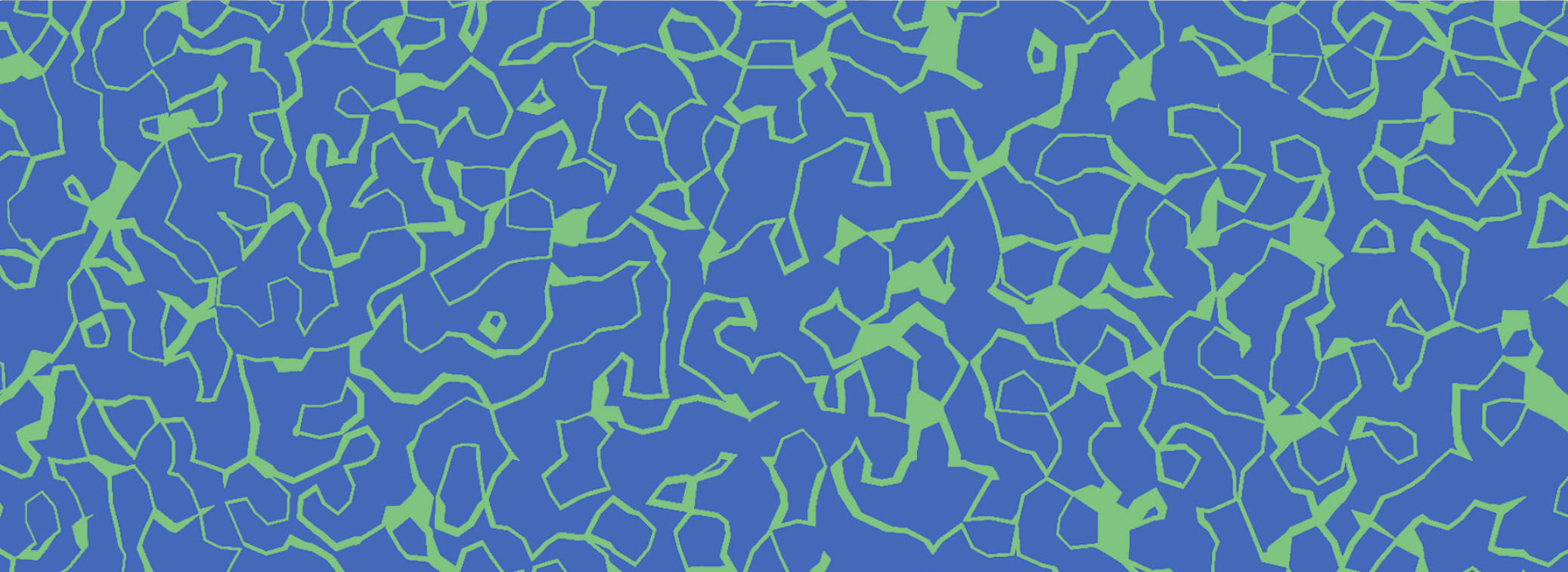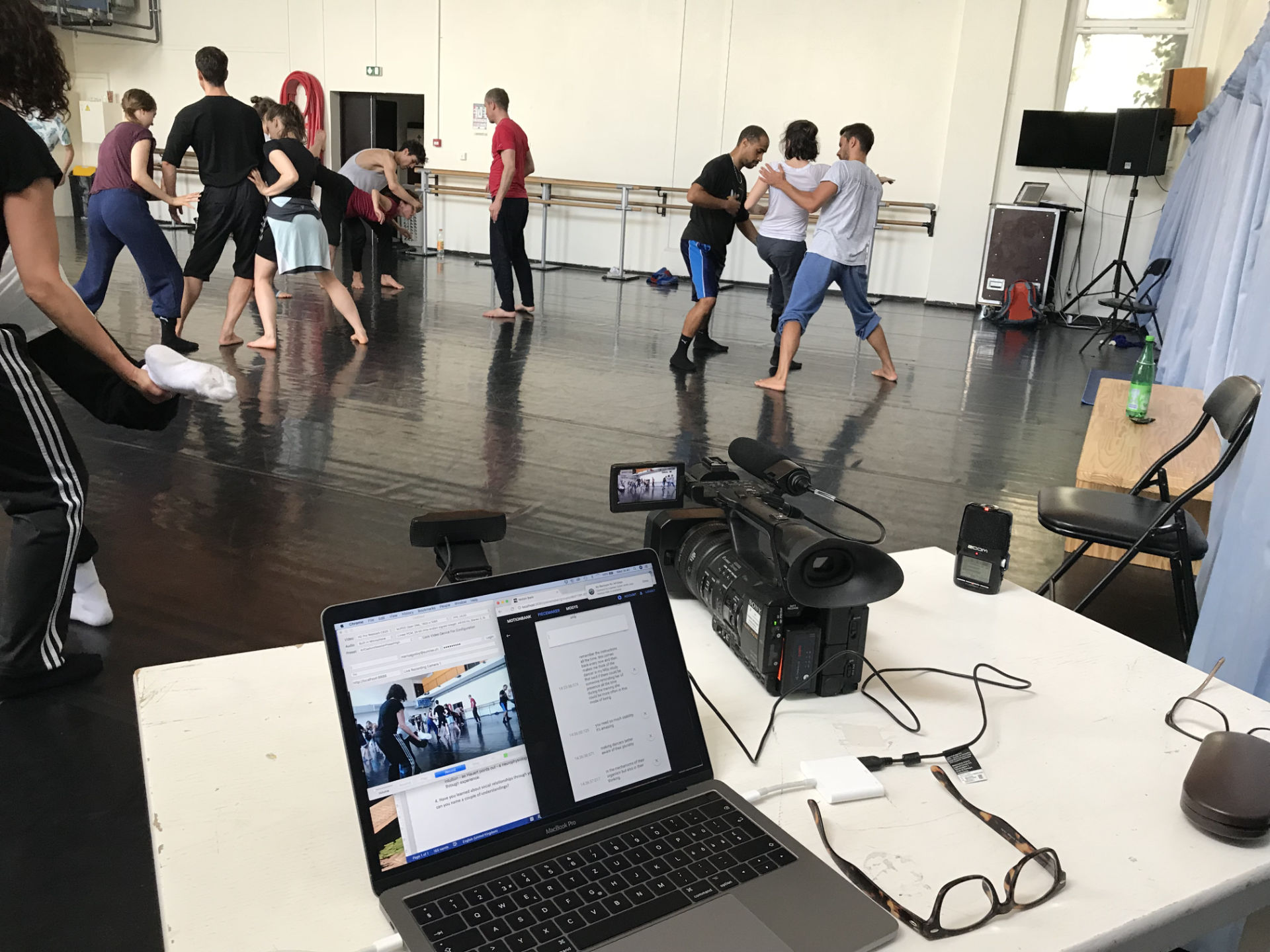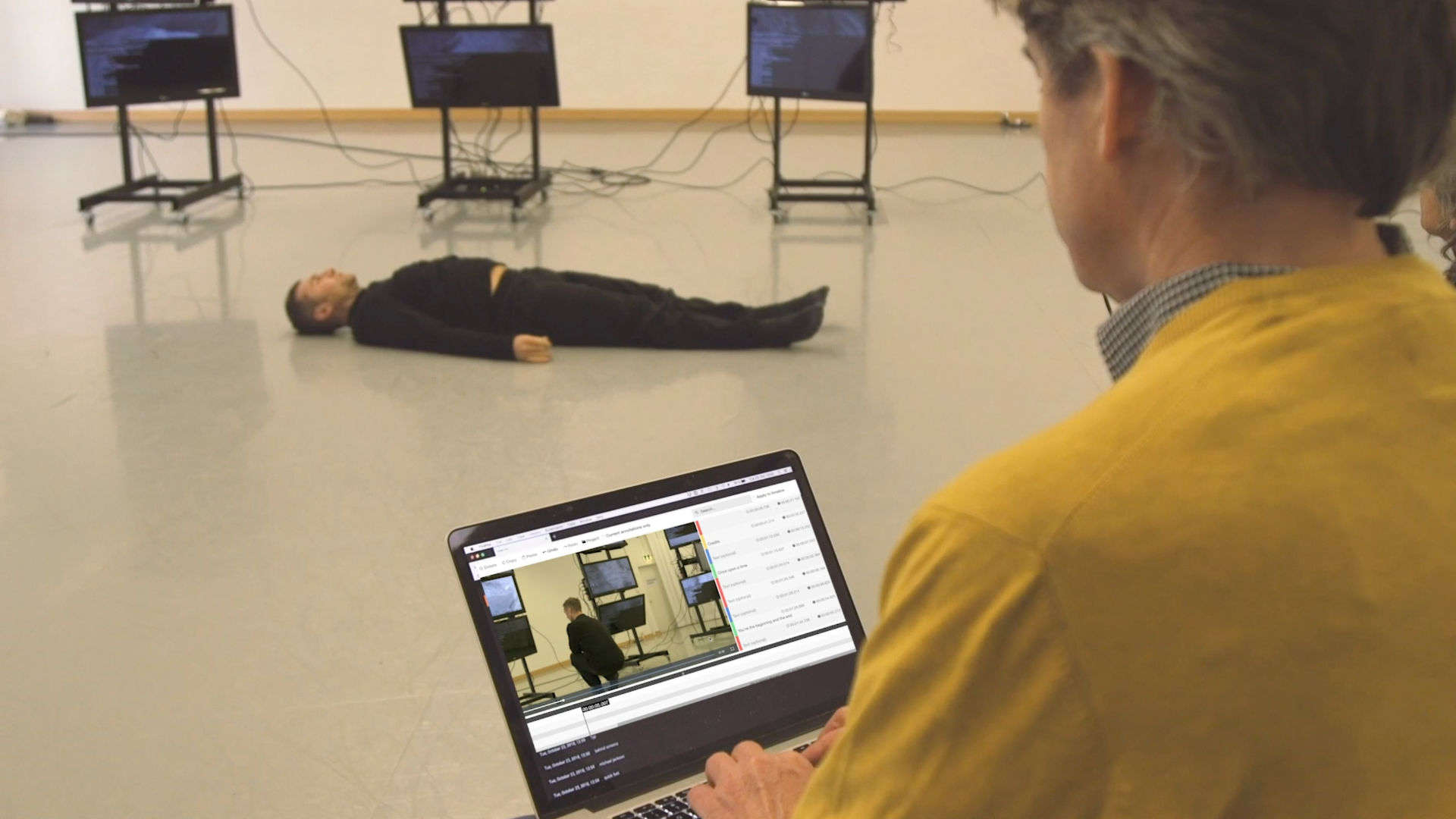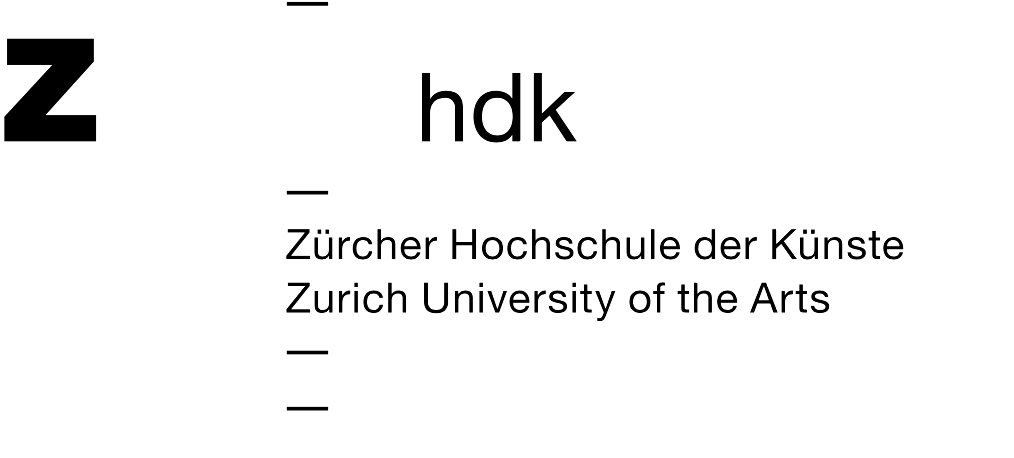
What is RESEARCH VIDEO?
RESEARCH VIDEO is a project of the Zurich University of the Arts 2017 – 2021,
funded by SNF (Swiss National Science Foundation), with a focus on using video as publication medium
for research in arts, design and visual anthropology.
RESEARCH VIDEO developed a software solution for publishing research as annotated videos and
combined it with a theoretical framework for enriched publications.
You are invited to use the tool for free and to read texts and tutorials on how to use RESEARCH
VIDEO, how to organize the process of research and how to publish annotated videos. Selected
use-cases show examples in the field of artistic research, design and corresponding fields.
Click here to watch the trailer
Click here to try the Research Video tool
Fields of Research

Analysis of screen-based media content
RESEARCH VIDEO suits for analyzing screen-based media content to find and annotate a certain structure of a story, drama, plot or timeline. It was already used in Storytelling-Lectures to recognize the three-act- or 8-steps-model, scenes, sequences and beats of a movie. It qualifies also to break down television shows, documentaries, webvideos, livestreams, animations, recorded plays or multimedia content in its dramatic form and pieces. Fits for students and lecturers to analyze audiovisual content and its composition.

Visual Antropology
As a sub-discipline of Social Anthropology, Visual Anthropology focusses on the understanding and production of (audio-)visual media within the social sciences and the critical study of visual representations. “Ethnographic film” being one of the most known assets of the discipline, Visual Anthropologists are often trained in both fields: Anthropology and filmmaking/photography. As the images and the sounds are the research data, they accompany and illustrate research texts, fieldnotes, publications, or even replace the text completely.

Choreographic Practice
In current choreographic practice, dance artists often make use of video recordings both during the creation process and as way to document performances of the dance work. Whether for archival or study purposes, the RESEARCH VIDEO tool can be useful in choreographic practice in that it allows key textual information about the creation process or about the work itself to be coupled to the audio-visual material through annotation. Moreover, the tool provides scope for the online dissemination of choreographic practice as well as the publication of practice-as-research materials.

Performance Analysis
You can use RESEARCH VIDEO to analyze any performance and publish the results of your study. Theatre performances, musical performances, sportive performances and other, can be enriched by textual analysis, exploring them in multilayered detail and sharing the insights with peers. The tool is agnostic to the specific approach you want to use, be it Grounded Theory, Microsociology, Video-cued Recall, Hermeneutics or other. It allows to annotate in any category you might create, making the precise location of your annotation visible and intuitively understandable.

Visual Antropology
As a sub-discipline of Social Anthropology, Visual Anthropology focusses on the understanding and production of (audio-)visual media within the social sciences and the critical study of visual representations. “Ethnographic film” being one of the most known assets of the discipline, Visual Anthropologists are often trained in both fields: Anthropology and filmmaking/photography. As the images and the sounds are the research data, they accompany and illustrate research texts, fieldnotes, publications, or even replace the text completely.

Video Transcription
As a video annotation tool, one of the affordances of RESEARCH VIDEO is the transcription of audio data contained in the video. The tool makes possible transcriptions of video interview content as well as verbal interactions among participants, for example, captured during fieldwork, or among collaborators in artistic projects. In research, it is also supportive in the processes of reporting and analysis of video data. One important feature of the tool with regards to transcription is that annotations can be exported as plain text (.txt format) and thus copied and pasted onto other applications the user wishes to work with.

Artistic Research
RESEARCH VIDEO was designed specifically to meet the demands of artists doing research on and through the process of creating art. For this the interface is kept as simple and intuitive as possible, while the tracks and tags open up multiple options for observing, categorizing, annotating and analyzing in individual ways. As an artist you can let your method emerge slowly from the material, experiment with different forms of annotations and find new inspiring ways to enrich the material.

Performance Analysis
You can use RESEARCH VIDEO to analyze any performance and publish the results of your study. Theatre performances, musical performances, sportive performances and other, can be enriched by textual analysis, exploring them in multilayered detail and sharing the insights with peers. The tool is agnostic to the specific approach you want to use, be it Grounded Theory, Microsociology, Video-cued Recall, Hermeneutics or other. It allows to annotate in any category you might create, making the precise location of your annotation visible and intuitively understandable.

Artistic Research
RESEARCH VIDEO was designed specifically to meet the demands of artists doing research on and through the process of creating art. For this the interface is kept as simple and intuitive as possible, while the tracks and tags open up multiple options for observing, categorizing, annotating and analyzing in individual ways. As an artist you can let your method emerge slowly from the material, experiment with different forms of annotations and find new inspiring ways to enrich the material.
Tutorials
Handbook

Handbook
The RESEARCH VIDEO Handbook helps researchers to get started using Video and the RESEARCH VIDEO Tool in their work. The chapters are as followed: Introduction, Appliance in the field, Copyrights, Recording Video, Video Editing, Video Analysis, Publication.
Click here to download the RESEARCH VIDEO Handbook (PDF) Click here to download theRESEARCH VIDEO Handbook (PDF)
Featured Projects

Thomas Hauert and Ballet de Lorrain
Godoy’s PhD looks into collaborative creation processes in improvisation choreography, with a focus on the development of highly skilled perceptions of self, other and environment, and how these capacities, that arguably foster creative modes of working, are developed and sustained over time. The work of dancer/choreographer Thomas Hauert with his company ZOO, and the creation of Flot (2018), realised in collaboration with CCN Ballet de Lorraine, constitute her case study. This investigation is embedded in the project Research Video, concerned with alternative formats for research publication.

Co-creative ethnographic research on rural Bolivian working youth
By using collaborative methods, Léa Klaue’s PhD research project aims to assemble a picture of the life realities of children and teenagers who had to start to work at an age the global north qualifies as too young. The visual anthropologist has followed the lives of Bolivian independent working children intermittently over six years, and compiles a series of co-creative documentary and fictive video pieces with text. The children’s voices are raised and the external perspective is questioned: from the historically Eurocentric discourse on child labour to her own gaze as a Western researcher.

Improv Actors In Germany
This project examines the opening of an improvised performance, focusing on the question
how the improvising actors build up the feedback-loop with the audience step by step. It
displays a 15 min video and analyses it through the lens of concepts of improvisational
theatre. It questions the role of laughter in this process and proposes an additional
concept, named “Deep Silence”, as a crucial part in the feedback-loop.
RV
Project Link

Research Academy In Zurich
In 2018 we invited professional artists from the performing arts to a 7-days workshop with RESEARCH VIDEO. Each artist had the chance to pursue experiments with annotated videos under the lead of Scott Delahunta and Suzan Tunca, supported by students from Cast/Audiovisual Media degree program, providing expertise in video capture and video editing. The outcoming drafts show an impressive range of applications in artistic research.
- We found that the artists used the tool in three ways:
- 1. Self-Observation through annotation
- 2. External Observation with annotation
- 3. Comparative modes of viewing with annotation

Co-creative ethnographic research on rural Bolivian working youth
By using collaborative methods, Léa Klaue’s PhD research project aims to assemble a picture of the life realities of children and teenagers who had to start to work at an age the global north qualifies as too young. The visual anthropologist has followed the lives of Bolivian independent working children intermittently over six years, and compiles a series of co-creative documentary and fictive video pieces with text. The children’s voices are raised and the external perspective is questioned: from the historically Eurocentric discourse on child labour to her own gaze as a Western researcher.

Improv Actors In Germany
This project examines the opening of an improvised performance, focusing on the question
how the improvising actors build up the feedback-loop with the audience step by step. It
displays a 15 min video and analyses it through the lens of concepts of improvisational
theatre. It questions the role of laughter in this process and proposes an additional
concept, named “Deep Silence”, as a crucial part in the feedback-loop.
RV
Project Link







